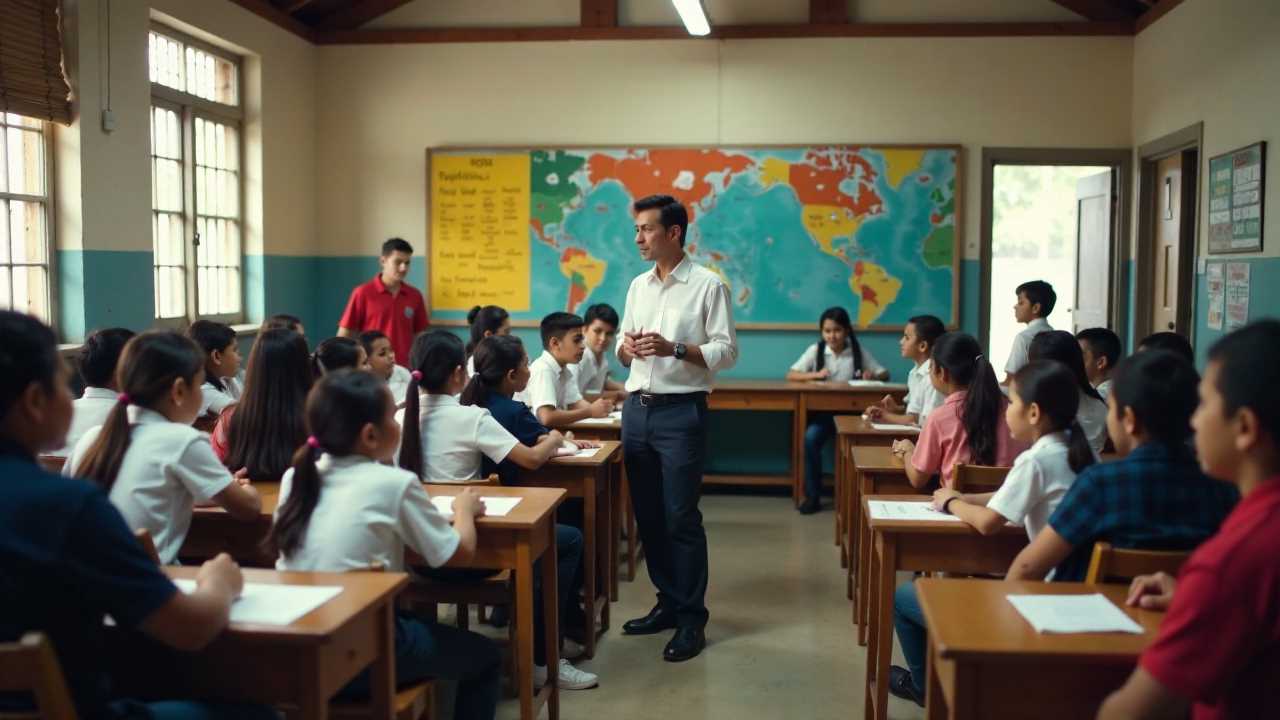
Understanding Middle School Engagement Techniques
Engaging students in middle school requires a thoughtful approach to teaching strategies. Middle school engagement techniques are designed to capture the attention of adolescents, who are navigating a crucial developmental phase. This age group thrives on active learning, which emphasizes participation and interaction over passive reception of information. By incorporating methods such as collaborative projects, differentiated instruction, formative assessment, interactive discussions, and experiential activities, educators can create a rich learning environment that fosters curiosity and critical thinking.
Active Learning: A Cornerstone of Engagement
Active learning transforms the traditional classroom into a dynamic space where students engage with the material in meaningful ways. This approach encourages learners to take an active role in their education, promoting deeper understanding and retention of knowledge. Techniques such as think-pair-share, where students discuss their thoughts with a partner before sharing with the larger group, can significantly enhance engagement.
Incorporating technology, such as interactive quizzes and online forums, also supports active learning. These tools provide immediate feedback, allowing students to assess their understanding and adjust their learning strategies accordingly. When students feel that their voices are heard and their contributions valued, they are more likely to remain engaged and motivated.
Collaborative Projects: Building Teamwork Skills
Collaborative projects are an effective way to engage middle schoolers while teaching essential teamwork and communication skills. These projects encourage students to work together towards a common goal, fostering a sense of community and belonging. When students collaborate, they learn to appreciate diverse perspectives and develop conflict-resolution skills, which are vital for their future endeavors.
To implement collaborative projects successfully, we can assign roles based on individual strengths and interests, ensuring that each student feels a sense of ownership over their contribution. Whether it’s a group presentation, a science experiment, or a community service initiative, these projects not only enhance engagement but also promote social skills that are crucial during these formative years.
Differentiated Instruction: Catering to Diverse Learning Needs
Differentiated instruction is key to addressing the unique learning styles and needs of middle school students. This approach involves tailoring lessons to accommodate varying abilities, interests, and learning preferences. By providing multiple avenues for students to access content, we can ensure that all learners remain engaged and challenged.
For instance, offering choices in assignments—such as written reports, visual presentations, or creative projects—allows students to engage with the material in a way that resonates with them. This flexibility not only boosts motivation but also fosters a sense of autonomy, encouraging students to take charge of their learning.
Formative Assessment: Informing Instruction
Formative assessment plays a critical role in maintaining student engagement by providing ongoing feedback. Unlike traditional assessments that evaluate what students have learned at the end of a unit, formative assessments occur throughout the learning process. This can include quizzes, peer reviews, or reflective journals that help educators gauge student understanding and adjust instruction accordingly.
By incorporating regular formative assessments, we can identify areas where students struggle and provide targeted support. This responsive teaching approach not only keeps students engaged but also reinforces the idea that learning is a continuous journey rather than a destination.
Interactive Discussions: Fostering Critical Thinking
Interactive discussions are a powerful tool for engaging middle schoolers in meaningful dialogue about the subject matter. These discussions encourage students to articulate their thoughts, challenge each other’s ideas, and explore different viewpoints. By creating a safe and respectful environment for discussion, we can foster critical thinking and analytical skills.
To facilitate engaging discussions, we can use open-ended questions that invite exploration and debate. Techniques such as Socratic seminars or fishbowl discussions allow students to take the lead in their learning, promoting ownership and investment in the topic at hand.
Experiential Activities: Learning Through Experience
Experiential activities provide students with hands-on learning opportunities that deepen their understanding of concepts. These activities can range from field trips to simulations and role-playing exercises. By allowing students to experience learning in a tangible way, we can enhance engagement and retention.
For example, a science class might conduct experiments that illustrate key principles, while a history lesson could involve reenactments of historical events. These immersive experiences not only make learning enjoyable but also help students connect theoretical knowledge to real-world applications.
Creating a Holistic Engagement Strategy
To effectively engage middle schoolers, we must create a holistic strategy that incorporates the aforementioned techniques. By blending active learning, collaborative projects, differentiated instruction, formative assessment, interactive discussions, and experiential activities, we can craft a comprehensive approach to teaching that meets the diverse needs of our students.
This multifaceted strategy not only keeps students engaged but also prepares them for future academic and social challenges. As educators, we have the opportunity to shape the next generation by fostering a love of learning and encouraging critical thinking skills that will serve them well beyond the classroom.
In summary, the integration of middle school engagement techniques is vital for creating a stimulating and supportive learning environment. By focusing on active learning, collaborative projects, and other effective strategies, we can inspire middle schoolers to take an active role in their education, paving the way for lifelong learning and success.
 Careers in EducationElementary EducationHigh School EducationEducational TechnologyTeaching StrategiesSpecial EducationPrivacy PolicyTerms And Conditions
Careers in EducationElementary EducationHigh School EducationEducational TechnologyTeaching StrategiesSpecial EducationPrivacy PolicyTerms And Conditions
